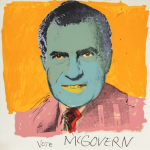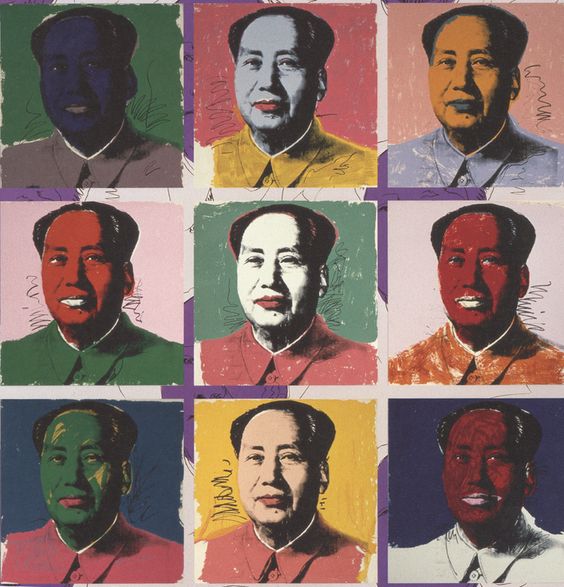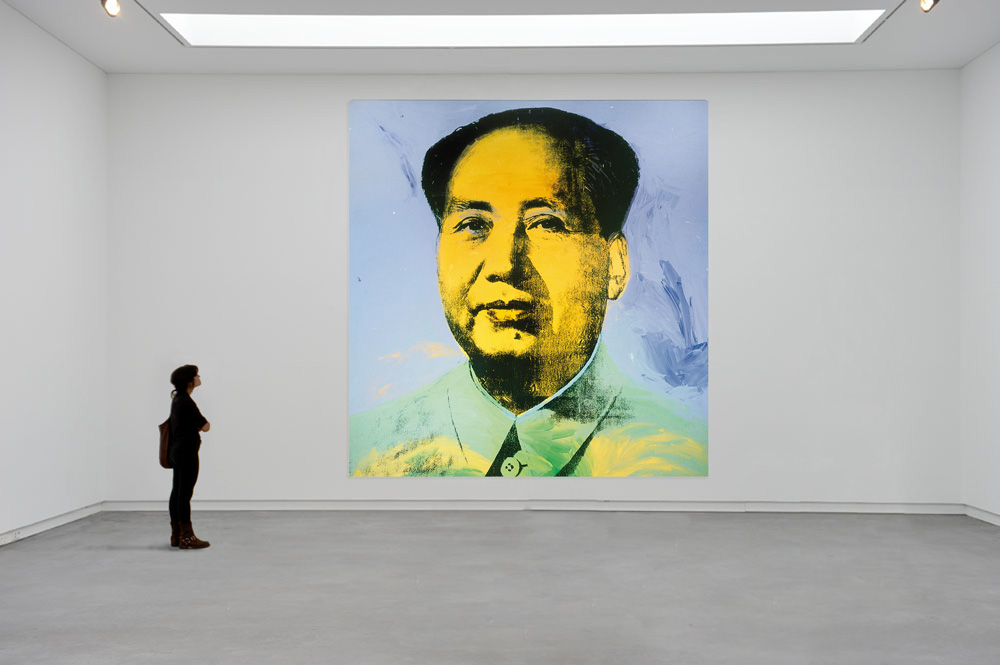Mao Zedong, in keeping with Marxism, argued this about the nature and purpose of art:
“In the world today all culture, all literature and art belong to definite classes and are geared to definite political lines. There is in fact no such thing as art for art’s sake, art that stands above classes, art that is detached from or independent of politics. Proletarian literature and art are part of the whole proletarian revolutionary cause; they are, as Lenin said, cogs and wheels in the whole revolutionary machine.”
Further:
“[Our purpose is] to ensure that literature and art fit well into the whole revolutionary machine as a component part, that they operate as powerful weapons for uniting and educating the people and for attacking and destroying the enemy, and that they help the people fight the enemy with one heart and one mind.”
To which I juxtapose Andy Warhol’s giant portrait of Chairman Mao[2]:
And two questions about selectivity and stylization in art:
 1. What is implied by an artist’s choice of subject matter? E.g., Warhol did also a portrait of Richard Nixon but not one of his dentist.
1. What is implied by an artist’s choice of subject matter? E.g., Warhol did also a portrait of Richard Nixon but not one of his dentist.
2. What is meant by an artist’s departures from strict realism ? E.g., Warhol made Mao larger than life, not as a miniature.
Sources:
[1] Mao Zedong, “Talks at the Yenan Forum on Literature and Art” (May 1942), Selected Works, Vol. III, p. 86 and p. 70.
[2] Andy Warhol, Mao, 1973, Acrylic and silkscreen on canvas, 448.3 x 346.7 cm

